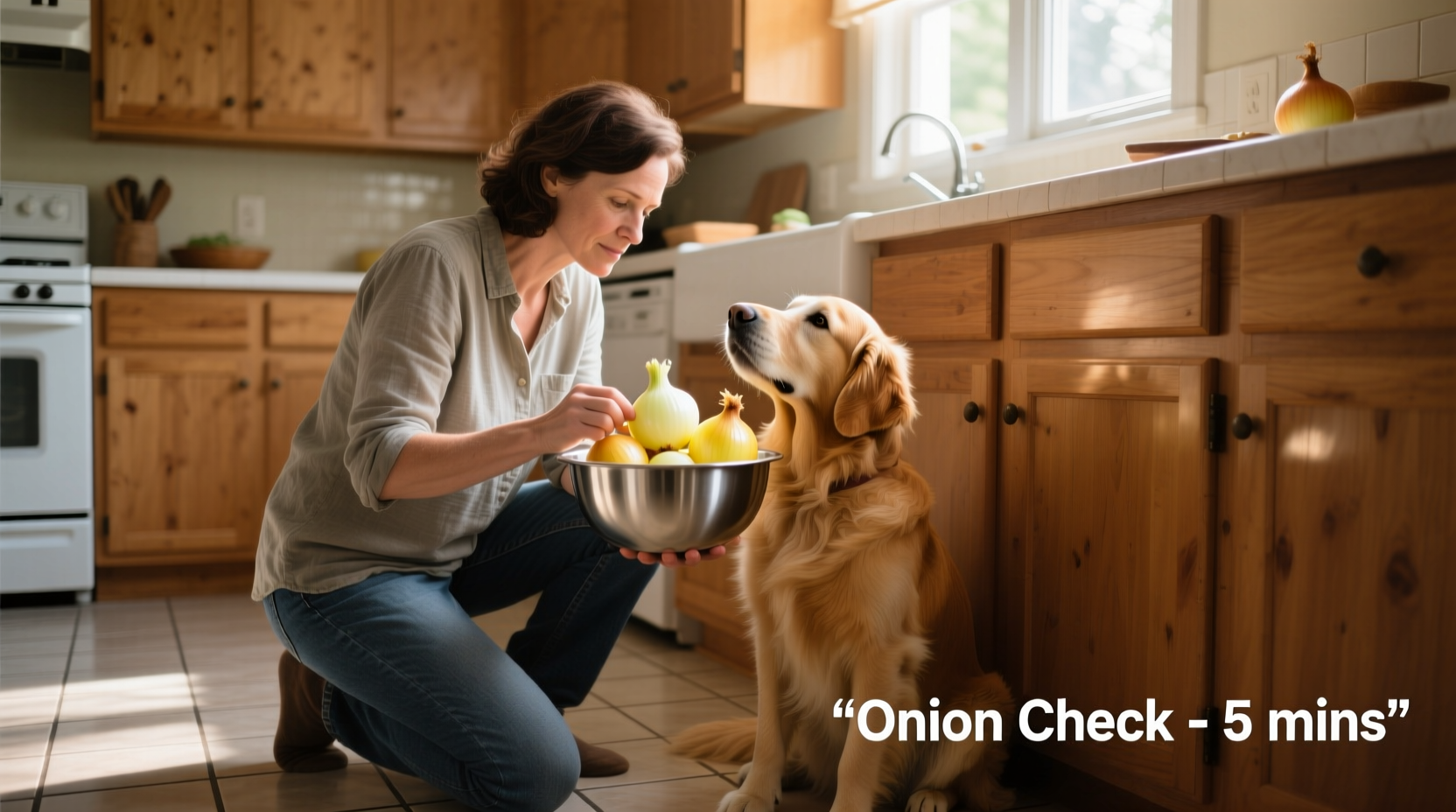As a pet owner, discovering your dog has eaten something potentially dangerous triggers immediate concern. Onions represent one of the most common yet underestimated household hazards for dogs. Unlike humans, dogs lack the enzyme necessary to metabolize N-propyl disulfide, the toxic compound found in all Allium family members including onions, garlic, leeks, and chives. This biochemical vulnerability makes even small exposures potentially fatal.

Why Onions Pose a Serious Threat to Canines
Dogs' inability to process onion compounds stems from fundamental physiological differences compared to humans. When dogs ingest onions, N-propyl disulfide oxidizes hemoglobin in red blood cells, forming Heinz bodies—abnormal structures that weaken cell membranes. This process, called hemolytic anemia, causes red blood cells to rupture prematurely, severely compromising oxygen transport throughout the body.
Veterinary research published by the ASPCA Animal Poison Control Center confirms that onion toxicity affects dogs regardless of preparation method. Whether raw in guacamole, cooked in gravy, or powdered in baby food, the toxic compounds remain biologically active. This explains why seemingly harmless human foods often prove dangerous to canine companions.
Symptom Timeline: What to Watch For
Onion poisoning symptoms typically develop gradually, creating dangerous delays in treatment. Understanding this progression helps owners recognize early warning signs:
| Time After Ingestion | Early Symptoms | Advanced Symptoms |
|---|---|---|
| 24-48 hours | Mild lethargy, decreased appetite | N/A |
| 48-72 hours | Pale gums, increased breathing rate | Weakness, exercise intolerance |
| 72+ hours | N/A | Dark urine (hemoglobinuria), collapse, jaundice |
This delayed reaction pattern explains why many owners don't connect their dog's sudden illness with onion consumption days earlier. The Veterinary Information Network reports that approximately 68% of onion poisoning cases involve delayed symptom recognition, significantly reducing treatment effectiveness.
Danger Levels: How Much Onion Is Too Much?
Unlike many toxins with clear minimum thresholds, onion toxicity depends on multiple factors including:
- Dog's weight and size (smaller breeds face higher risk)
- Individual sensitivity (some dogs react to minimal exposure)
- Concurrent health conditions (anemia or kidney issues increase vulnerability)
- Frequency of exposure (repeated small doses accumulate toxicity)
The generally accepted toxic dose is approximately 15-30 grams of onion per kilogram of body weight. However, the Merck Veterinary Manual documents cases where dogs developed hemolytic anemia after consuming as little as 5g/kg. For perspective, a single medium onion weighs approximately 150 grams—enough to poison a 10-pound dog.
Immediate Action Plan: Your Dog Ate Onions
If you witness your dog consuming onions or suspect recent exposure, follow these critical steps:
- Contact professionals immediately: Call your veterinarian or the ASPCA Animal Poison Control Center (888-426-4435). Have the onion product packaging available to share ingredient details.
- Do not induce vomiting unless specifically instructed by a veterinary professional. Some onion preparations can cause additional esophageal damage when regurgitated.
- Document everything: Note the time of ingestion, estimated quantity consumed, and your dog's current behavior. This information proves crucial for treatment decisions.
- Monitor vital signs: Check gum color (pale or yellow indicates trouble), respiratory rate, and energy levels while awaiting professional guidance.
Veterinary treatment typically involves intravenous fluids, oxygen therapy, and in severe cases, blood transfusions. Early intervention dramatically improves outcomes—the American Veterinary Medical Association reports that dogs treated within 12 hours of ingestion have a 95% recovery rate compared to 65% when treatment begins after 48 hours.
Preventing Onion Exposure: Practical Household Strategies
Protecting your dog requires vigilance beyond simply avoiding intentional feeding. Many common household items contain hidden onion derivatives:
- Human foods to secure: Baby food (often contains onion powder), soups, gravies, pizza, and processed meats
- Garden precautions: Fence off vegetable gardens containing onions, leeks, or chives
- Guest education: Inform visitors about the danger—many well-meaning people don't realize onions harm dogs
- Trash management: Use secured containers to prevent scavenging of onion-containing food scraps
Consider implementing a "dog-safe zone" in your kitchen where human foods containing onions are never prepared or stored. This simple spatial separation significantly reduces accidental exposure risks according to veterinary behavior specialists.
Common Misconceptions About Onions and Dogs
Several persistent myths endanger dogs through false reassurance:
- "Cooking neutralizes the toxin" - False. Heat doesn't destroy N-propyl disulfide; cooked onions remain equally dangerous.
- "Small amounts are safe" - Dangerous myth. Toxicity accumulates with repeated exposure, and individual sensitivity varies widely.
- "Only raw onions are problematic" - Incorrect. Onion powder contains concentrated toxins (1 tablespoon equals one medium onion).
- "Garlic is safe in small doses" - Misleading. Garlic contains higher concentrations of toxic compounds than onions (5x more potent).
The CDC's Healthy Pets initiative emphasizes that no scientific evidence supports safe therapeutic use of onions or garlic for dogs, despite popular misinformation circulating online.
When to Consult Your Veterinarian
Seek immediate veterinary attention if your dog shows any of these warning signs after potential onion exposure:
- Pale or yellow-tinged gums (normal color is bubblegum pink)
- Unusual lethargy lasting more than 12 hours
- Increased respiratory rate (over 30 breaths per minute at rest)
- Dark orange or brown urine
- Loss of appetite lasting more than 24 hours
Remember that symptoms often appear days after ingestion, making retrospective diagnosis challenging. When in doubt, consult your veterinarian—early intervention saves lives.











 浙公网安备
33010002000092号
浙公网安备
33010002000092号 浙B2-20120091-4
浙B2-20120091-4